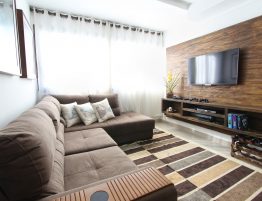
Summer seems to stay later each year, and this year is no exception with the midday hovering in the mid-70s. But as it dips into the 50s or colder at night, your cooling and heating system may be getting quite a workout—and you’re struggling to keep your indoor climate comfortable.
First, let’s look at general seasonal cooling and heating.
Summer Settings
To save the most energy (and money), Energy Star recommends running your A/C no cooler than 78º. Right now, many of you just rolled your eyes. Will you be comfortable at 78º or warmer inside on the hottest summer day? Likely, yes (or at least not as uncomfortable as you think)—but as the outdoor temperature decreases and gets closer to 78º, it’s going to start getting pretty uncomfortable for those used to putting on a sweater indoors because of the A/C setting. You’ll also feel that temperature differently depending on the number of windows, vent placement, ceiling height, and the insulating properties of the building. Still, there’s no reason to not start with that setting and then adjust to your preference. At least then you know how much extra energy you’re paying for to achieve comfort.
Winter Settings
The recommended winter setting is anywhere from 68º-70º (or lower). As with cooling, give these efficient settings a try and then adjust for your comfort. Remember that keeping the heat too low can be bad for your health, and reduce your ability to fight off seasonal illnesses. It is possible to be economical and still be comfortable and healthy. (Plus, there are assistance programs through your utility company if you’re going through a tough time and struggling to pay your heating bills.)
Daytime Settings
Once you’ve found your comfort zone while at home, you can save some energy by raising the A/C or lowering the heat setting by a few degrees (maybe as much as 6º-8º) during the day, or whenever you are away from home for work. You might also prefer a different setting while sleeping, such as cooler so you can bundle under a winter blanket, or warmer so the A/C isn’t too chilly at night. To make these thermostat changes easy, you can swap out a basic thermostat for a programmable one, or even a smart thermostat that not only can learn your schedule and preferences, but are capable of extensive programming, remote access, and can switch between heat and cool on their own (great for fall days with wide temperature swings).
When Seasons Change
And that’s a great segway into the changing seasons. Needing to switch between cool and heat can be annoying but necessary. Programmable thermostats can help with that, but keeping your heating and cooling settings closer to the outdoor temperature can reduce the amount of time the system needs to run. Put on another layer, or grab a jacket or throw to take the chill off before turning on the heat to get a few more degrees of comfort. Or open some windows for a cross breeze and turn on some low energy fans before turning on the A/C. In all seasons, running your central air’s fan even when the A/C or heat aren’t active will make your space more comfortable and will more evenly distribute the conditioned air. Just don’t run it all the time, since that will raise interior humidity which can be uncomfortable and even contribute to mold growth. About 20 minutes per hour is adequate (and easy to manage with some of the new smart thermostats).
Any time of the year, you can find a comfortable setting for your cooling and heating, without panicking after the utility bill arrives. Try these starting temps and adjust to your liking!







